- Home
- M G Vassanji
Mordecai Richler Page 2
Mordecai Richler Read online
Page 2
I have attempted to distance my character from the gruff caricature, the “classic Richler” that the media loved. He undoubtedly entertained and made news with that demeanour, using it to provoke controversy, to call on the detractors and the cheerleaders. But that was only one, and a later, aspect of him—playing on a celebrity status, the hazards of which he had sternly warned against as a younger, hungrier man. Mordecai Richler was first a literary man, a disciplined, professional writer and novelist of great distinction. A complex man of many qualities who carried on not just the much-reported public battles but also his private inner struggles. He was not always consistent—who is, at any one time, let alone during a lifetime? He was ambitious as a young man but circumscribed by his origins, with which, however, he made his peace; a controversial truthteller ready to demolish an extreme or ludicrous position, yet not always quite sensitive to the truth lurking behind it; a devoted family man; and a generous dearly loved friend. A man who escaped, discovered himself, and returned, but stayed at an angle with his world, always the exile, the writer.
CHAPTER TWO
Origins
Mordecai Richler was born on January 27, 1931, into an Orthodox Jewish family in Montreal, in the downtown neighbourhood that he called, despite objections, the ghetto, a thin urban grid consisting of the five working-class streets between St. Laurent Boulevard (the Main) and Park Avenue, bounded below by Pine Avenue and above by St. Viateur. Both sets of grandparents had emigrated from Eastern Europe in the early twentieth century, within living memory. His mother’s father, Jehudah Rosenberg, was an eminent Hasidic rabbi and scholar from Poland who had immigrated to Toronto in 1912 before ending up with his large family in Montreal, in 1919, not far away from the Richlers. Mordecai’s paternal grandfather, Shmariyahu (Shmarya) Richler, had arrived in 1904 from Galicia, a province of Eastern Europe, and was in the scrap metal business. According to a family story, Shmarya had arrived with an onward fare from Montreal to New York (an alternative story says Chicago), but he met a fellow Galician with a ticket only up to Montreal, where he had no relatives. So the two men exchanged tickets and cities.
The Jews of North America with origins in the same region of Eastern Europe were intimately related in their history and culture, a connection carried over into an easy identification across the Canadian-American border. Many of them had relations on the other side. It would take a generation at least before the essential differences in the two countries would come to be felt in these communities, and accepted.
Naturally the traditions that had been nurtured in the Old World for centuries would reflect on the lives of the Jews of Montreal’s Main, and naturally they would come under threat in the generational conflicts that were a part of Richler’s growing up. On one side existed the great tradition going back thousands of years, the elaborate rules and rituals, the memories of exile, oppression, and survival; on the other, the exhilarating freedom of North America, the seductions of assimilation, the promise of a new identity in a land of unlimited expanse and opportunity. But even this new promised land was not immune to the bane of anti-Semitism, bringing back to the quick memories of past victimhood. The Holocaust in Europe in the twentieth century only kept those fears alive, the old identity potent.
Jews had lived in Eastern Europe since medieval times and perhaps before, in self-contained villages or urban neighbourhoods called shtetls, in Russia, Poland, Galicia, and elsewhere. Galicia, a province of the Austro-Hungarian Empire, bordered Russia and Poland in the north and occupied a territory now divided between Poland and Ukraine. Unlike their western Sephardic brethren, these Eastern Ashkenazim lived a separate existence from their neighbours, in their case the Poles, Ukrainians, Russians, and Germans. Under the eyes of watchful governments, they essentially governed themselves, with their own rabbinical courts, educational institutions, and voluntary and charitable organizations; they had their butchers, bakers, barbers, circumcisers, teachers, musicians, printers, and middlemen; they had their lawyers, doctors, innkeepers, traders, and wealthy businessmen.
Their language was Yiddish, an inter-territorial hybrid of mainly High German and Hebrew, with small admixtures of other European languages. Their life in the shtetl was defined in finest detail by religion, ritual, and tradition. All acts of daily living, from the morning prayer at waking to washing, eating, and clothing, were to be performed according to prescribed rules and rituals; Sabbath was strictly observed. The traditional male attire was a white shirt, a vest, black pants, a long black caftan, and a black hat. The women dressed modestly and wore wigs. Only a minority of Jews today observe these codes. The life of the Jews in the shtetls is vividly described in the novels of Isaac Bashevis Singer, who was born in Poland in 1902.
Alternately tolerated and despised, the outcasts of mainstream society, victimized, economically restricted, and physically bullied, the Jews did not have a status as a nation as other peoples did. Often, on an authoritarian whim, the shtetls were subjected to organized mass attacks, called pogroms (from the word for “riot” in Russian), and expulsions. Perhaps the most serious attacks on the Jews of Eastern Europe occurred in 1648 under the Ukrainian Chmielnicki, who led a large uprising of Cossacks in the destruction of numerous shtetls and the deaths of many thousands. More recently, in 1903, there was an extremely violent pogrom in Kishinev, Russia, and, in 1918, in Cracow, Poland. Moreover, whenever a bunch of drunks needed a scapegoat, there was always the Jew at hand.
In the eighteenth century, a mystical mass movement called Hasidism took hold among the Jews of Eastern Europe. Founded by Israel ben Eliezer, or the Baal Shem Tov, Hasidism was based on ecstatic devotion to God, in contrast to the formal rabbinical form of the faith, or “rabbinism.” Hasidic practice, which involved the person emotionally and completely, was attractive to a simple, vulnerable, and superstitious population devastated by the Cossack uprising of fifty years before and fearful of the ongoing political upheavals of the region. It is estimated that almost half of Eastern European Jewry followed the Hasidic movement. Almost every shtetl had a Hasidic leader, the Rebbe, or Tzaddik, who himself was a subject of devotion and often claimed magical powers. Stories of these miracles became part of the Hasidic traditions.
Since the nineteenth century, Jewish immigration to North America had been progressively on the rise. Leaving a land which had been home for centuries, where they had developed distinct traditions and yet were always the outsiders, was a one-way voyage from an experience of persecution and life on the edge. They came away to Montreal, Chicago, New York, bearing their culture and history and language, their memories of exile and persecution; the conflicts with the new generations, obviously less attached to the old ways, were therefore painful. They are reflected in Mordecai Richler’s adolescent rebellion while growing up in Montreal.
THE MONTREAL OF RICHLER’S CHILDHOOD and youth was Canada’s cosmopolis and largest port. Situated at the mouth of the St. Lawrence River, it had been since fur-trading days the economic nerve centre of the country and its doorway to the world. A diversity of people therefore came to settle here. Immigrants, even if headed elsewhere, landed at Montreal before going on by train to Toronto, Chicago, New York, or Winnipeg. With its diversity of coexisting peoples and two predominant language cultures, it had a unique character on the North American continent. One aspect of the city’s culture was defined by the presence of a wealthy Anglo-Scottish business elite—at the turn of the twentieth century they controlled three-quarters of the wealth of the nation. Enthusiasts of the British Crown, they inhabited the more palatial residences of the city, initially in the area known as the Golden Square Mile and later in Westmount. Among them were the Killams, the Holts, the McConnells, the Molsons, the Southams—industrialists, financiers, newspaper barons—well-known Canadian names to this day. The lesser folk, besides those of British and French descent, included the growing numbers of Jews, Greeks, and Italians.
“Babylon on the St. Lawrence,” Montreal, was the city of culture and cor
ruption, nightclubs and churches, of legends and legendary larger-than-life personalities. Prostitution thrived, the police were happily corrupt. “Vice stalks through our city,” scolded Judge Coderre in a report in the 1920s, “with a hideousness and insolence that appear sure of immunity.” Whorehouse madams flaunted their wealth, he fumed, riding in luxurious automobiles and living in grand mansions in the better sections of the city. Two decades later nothing had changed, according to William Weintraub, Montreal writer and historian. The politics of the city (and province) were no less outrageous, exemplified by its colourful, populist mayor, Camillien Houde, who had emerged from the poverty that was the other face of Montreal.
In 1939, on the eve of the Second World War, Montrealers gave a tumultuous welcome to King George VI and Queen Elizabeth, who were driven in a motorcade around a festooned city packed with flag-waving crowds. Schools were off that day, and among those who waved at the King and Queen from the street was a young Mordecai Richler. The war that came soon highlighted the deep divisions within Quebec society. In 1940 Mayor Houde was held in detention for publicly declaring—and reflecting the French-nationalist sentiment—that he would refuse to register for war service, a requirement for male adults that was to be put into effect shortly. Welcomed by a crowd of thousands when released four years later, he went on to win the mayoral election once again. Meanwhile, during the war the city had seen an eruption of overt anti-Semitism in the form of nasty media pronouncements and painted slogans in public places. Public morality continued to be defended by the Church, and a mass wedding of more than a hundred Catholic couples took place in the baseball stadium, witnessed by more than two thousand well-wishers. This was the larger political and social reality within which the Jews lived in the ghetto, as a mostly self-contained community.
A few months before Houde’s release, the lovely stripper Lili St. Cyr began her stint at the Gayety Theatre on the Main, to last seven years, thrilling males from adolescent to senior, one of whom was Mordecai Richler’s father, Moses. With her classy-sounding French name, “Montreal’s most famous woman” and “Goddess of Love” was actually Marie Klarquist of Minneapolis. “I broke hearts and emptied pocketbooks,” she said, while Father Anjou denounced her in Le Devoir: “The theatre is made to stink with the foul odour of sexual frenzy.” No other city in Canada, perhaps in all North America, could boast such a boisterous cultural mélange, match such excess and repression, reproduce such popular excitement. It was a writer’s, or an artist’s, dream city, and indeed it was called, with typically colonial hyperbole, the Paris of the West (or North); but it did produce a host of renowned writers, filmmakers, and playwrights.
Saul Bellow was born in Lachine, a suburb of Montreal, in 1915; the family may have lived in the Jewish ghetto before moving on to Chicago when he was nine. More essentially Canadian but of the same generation and background as Bellow were Irving Layton, born in Romania and brought to Montreal at the age of one in 1913; A.M. Klein, born in Ukraine in 1909 and also perhaps brought to Montreal at age one; and Louis Dudek, born in Montreal in 1918. One cannot help observing that these writers must all have borne the mark of the outrages in Eastern Europe. The latter three went on to become leading Canadian anglophone poets. They attended the same high school (Baron Byng) in the ghetto, on St. Urbain Street, both the school and the street immortalized in the future novels of Mordecai Richler. The city could claim, in addition, poet F.R. Scott, novelist Hugh MacLennan, and humorist Stephen Leacock among its eminent literati and teachers at McGill, which itself was the alma mater of critic and biographer Leon Edel. A younger generation of Montrealers included Mavis Gallant and Leonard Cohen; Brian Moore, an immigrant from Ireland; and William Weintraub, a filmmaker and writer whose lasting contribution may be his accounts of his friendships and his carefully documented correspondence with Richler, Gallant, and Moore during the formative years of their distinguished literary careers.
A TEN-YEAR-OLD with wide dark eyes and protruding ears, a thick mop of black hair, and a somewhat melancholy, mysterious look that would not change even in middle age. He did not deign to smile for the camera. An intense young man hurrying about with a pile of books in his arms. By all accounts he was reserved, sometimes awkward, though as the renowned writer he would become he would captivate admiring audiences even when he did not enjoy addressing them. Mordecai Richler’s was not a happy childhood at home, for his parents did not get along and eventually separated. But it was a childhood otherwise rich in character and experience, crowded and eventful, leaving indelible impressions that he would describe in autobiographical essays, capture in his short fiction—collected in The Street—and transform into the material of his longer and mature work. This childhood world became his literary universe; it would bring him his glory.
Jews formed the largest immigrant group in Montreal. By 1941, when Richler was ten, there were sixty-four thousand Jews in the city. Arriving at the riverfront quays, the immigrants would have been met by the expansive St. Laurent Boulevard (the Main), which funnelled them up to their respective neighbourhoods. A vast majority settled in the ghetto. In its exclusivity, its closeness to the Orthodox tradition, and its self-sufficiency, this ghetto was simply a more open version of the Eastern European shtetl. Everyone could speak Yiddish, and some spoke nothing but. The Main was where its public life took place, where you would saunter off to buy your meat or bread, or follow the smells to the bagel ovens or to your favourite among half a dozen delis for your smoked meat, or go get your groceries, or have a suit made, or hang around and shoot pool, have a drink and a banter, talk politics, or catch a movie at the Roxy or the Crystal Palace. If you were old enough, you could sneak off to catch Lili St. Cyr perform at the Gayety, if she was in town.
St. Urbain Street was the second street westward from the Main and, in the young Richler’s universe, the second step up the ladder of relative prosperity. The bottom rung was Clark Street. Park Avenue was at the top and the dividing line, beyond which was the area of Outremont and its dream life, where the wealthy Jews lived. The boy from the ghetto makes it abundantly clear how far away that life was, how enticing, how impossible it seemed to the poorer Jews like his father. On St. Urbain Street, the men
worked as cutters or pressers or scrap dealers and drifted into cold-water flats, sitting down to supper in their freckled Penman’s long winter underwear, clipping their nails at the table.
Others worked as shoemakers, deliverymen, mechanics. The cold-water flats in which they lived, in the typical brick row houses of the neighbourhood, were heated only by a single coal stove in the kitchen, leaving the rest of the apartments cold during the harsh winters. In Outremont, beyond Park Avenue, however, the fathers,
in their three-piece suits and natty fedoras, were in property or sweaters or insurance or (the coming thing) plastics. They were learning how to golf.
Outremont, our heart’s desire, was amazing. Kids our own age there didn’t hang out at the corner cigar store or poolroom, they had their very own quarters. Basement playrooms, Ping-Pong tables. There were heated towel racks in the bathrooms. In each kitchen, a Mixmaster.
The Montreal society of those times has been depicted as consisting of three distinct parts—“solitudes,” to use a favourite Canadian word—with hardly any social interaction among them, but with enough suspicion, animosity, and envy to go around. As Richler describes it:
If the Main was a poor man’s street, it was also a dividing line. Below [to the east], the French Canadians. Above, some distance above, the dreaded WASPs.…
The ghetto in between was the buffer zone. As in the manner of rival poor communities everywhere, the Jews and the French did not get along. Among the French, as Richler has documented, there existed a tradition of anti-Semitism. To the denizens of the ghetto, on the other hand, the French were the goyim, the others, with a different God, who lived and ate according to different rules, with whom intermixing was impossible.
We fought the French Canadians stereotype fo
r stereotype. If many of them believed that the St. Urbain Street Jews were secretly rich, manipulating the black market, then my typical French Canadian was a moronic gum-chewer. He wore his greasy black hair parted down the middle and also affected an eyebrow moustache.… He was the dolt who held up your uncle endlessly at the liquor commission while he tried unsuccessfully to add three figures.…
Mordecai Richler was not one for pulling punches. Even as he concedes that the French “were not entirely unloved” and that “the real trouble was there was no dialogue between us and the French Canadians,” one can almost sense the former St. Urbain kid rolling up his sleeves, pitching back the Jews’ replies to the taunts they endured. The wounds of prejudice are not easily shrugged off. The exiles of the pogroms who were soon to welcome exiles of the Holocaust were always quick to spot—or suspect—anti-Semitism.
If the French were “our enemies,” the “pea-soups,” and “our schvartzes” (blacks), he adds, it was “only the WASPs who were truly hated and feared.… It was, we felt, their country.… [B]ring down the most insignificant, pinched WASP fire insurance inspector and even the most arrogant merchant on the street would dip into the drawer for a ten spot or a bottle and bow and say, ‘Sir.’”

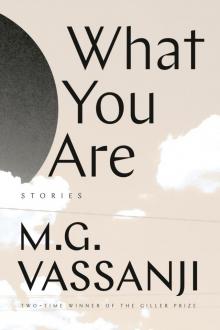 What You Are
What You Are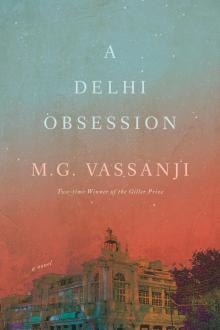 A Delhi Obsession
A Delhi Obsession When She Was Queen
When She Was Queen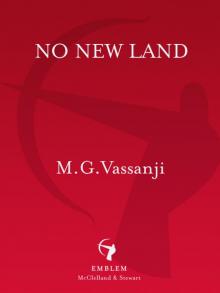 No New Land
No New Land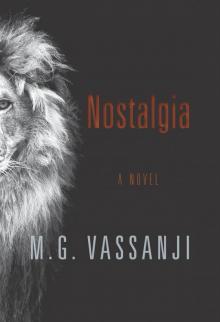 Nostalgia
Nostalgia Mordecai Richler
Mordecai Richler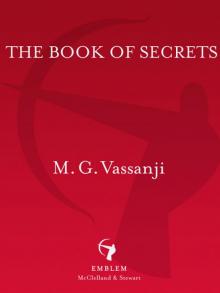 The Book of Secrets
The Book of Secrets Amriika
Amriika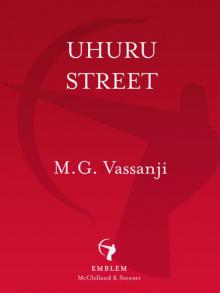 Uhuru Street
Uhuru Street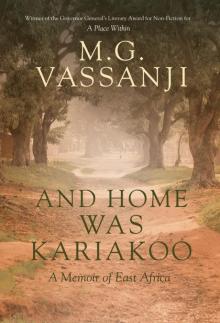 And Home Was Kariakoo
And Home Was Kariakoo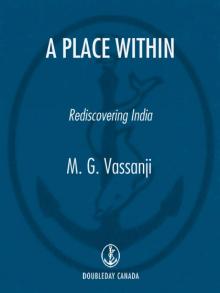 A Place Within
A Place Within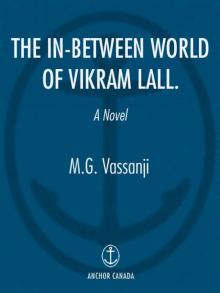 The In-Between World of Vikram Lall
The In-Between World of Vikram Lall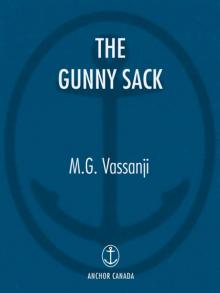 The Gunny Sack
The Gunny Sack